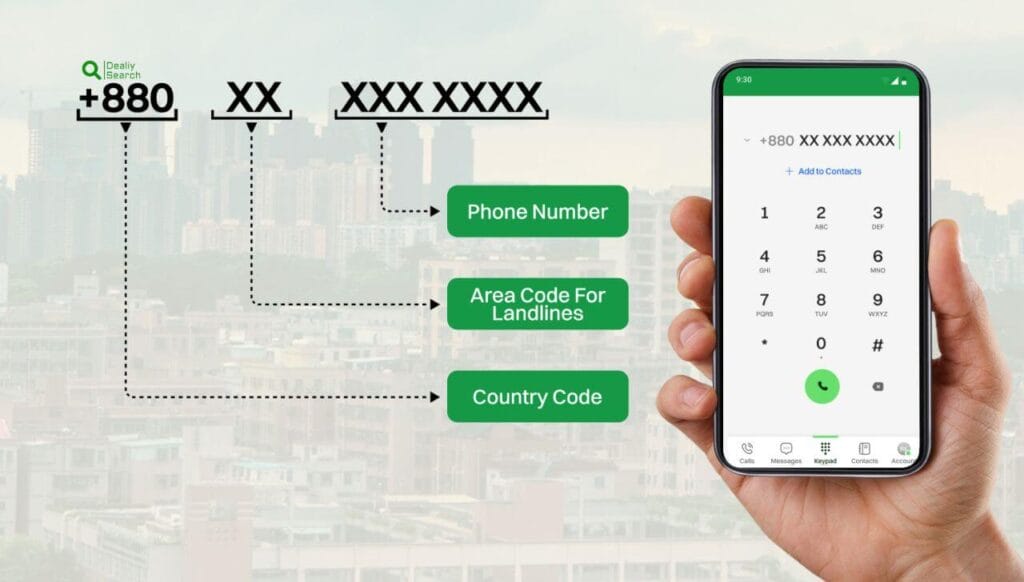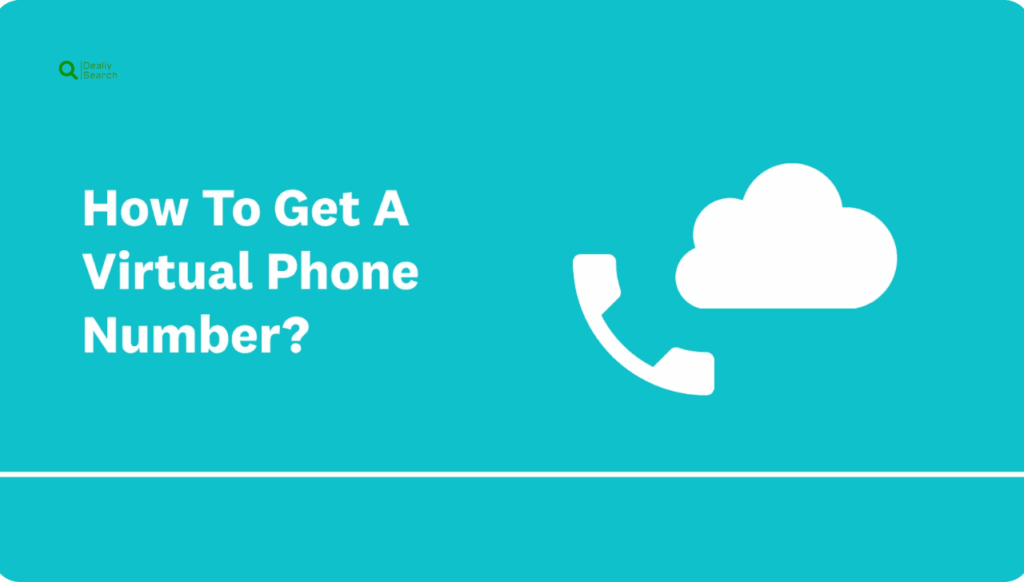Benefits of Using a Virtual Phone Number for Business & Privacy

A virtual phone number is a cloud-based number that isn’t tied to a specific device or location, making it a flexible and convenient communication solution. Whether for business, personal use, or international travel, virtual numbers allow users to make and receive calls from anywhere using the internet. They enhance privacy, improve accessibility, and reduce costs, making them ideal for remote work, customer service, and global expansion.
Many businesses use virtual phone numbers to establish a local presence in different regions without needing physical offices. With features like call forwarding, voicemail, and SMS support, virtual numbers provide a seamless communication experience. In this guide, we’ll explore how virtual phone numbers work and why they’re becoming an essential tool in today’s digital world.
What is a Virtual Phone Number?
A virtual phone number is a cloud-based phone number that isn’t tied to a specific SIM card or physical location. It allows users to make and receive calls or texts over the internet, offering flexibility for businesses and individuals. Virtual numbers are commonly used for privacy, remote work, and international communication. They support features like call forwarding, voicemail, and SMS, making them ideal for businesses expanding globally or individuals who need multiple numbers for different purposes without requiring extra phone lines.

What are the Key Features of a Virtual Phone Number?
Virtual phone numbers come with various features that enhance communication and flexibility. Here are the key features:
- Call Forwarding: Redirects calls to any device, ensuring seamless connectivity.
- Voicemail & Auto-Reply: Stores missed calls and sends automated responses.
- SMS & MMS Support: Allows text messaging and multimedia sharing.
- Multiple Device Access: Works on smartphones, tablets, laptops, and desktops.
- Local & International Numbers: Establishes a presence in different regions without a physical office.
- Call Recording: Records calls for quality assurance and security.
- Custom Greetings & IVR: Enhances customer service with automated menus.
- Privacy & Security: Keeps personal numbers private for business or online use.
These features make virtual phone numbers a powerful communication tool for businesses and individuals.
Why is important
A virtual phone number is important because it enhances communication, privacy, and flexibility. It allows businesses to establish a professional presence in multiple locations without physical offices, improving customer service and global reach. For individuals, it offers a secure way to separate personal and work calls, protecting privacy. Virtual numbers also support remote work, cost-effective international calling, and call forwarding, ensuring seamless connectivity anywhere. With added features like voicemail and SMS, they provide a reliable and efficient communication solution in today’s digital world.
How to Get a Virtual Phone Number

Getting a virtual phone number is simple and can be done in a few steps:
- Choose a Provider: Select a reliable virtual phone service like Google Voice, RingCentral, or Grasshopper.
- Select a Plan: Pick a plan based on your needs, whether for business, personal use, or international calling.
- Pick a Number: Choose a local, toll-free, or international number.
- Set Up Features: Configure call forwarding, voicemail, and SMS options.
- Start Using It: Use your number via an app, VoIP system, or web platform for calls and texts.
With a virtual number, you can communicate easily from anywhere!
How Virtual Phone Numbers Work
Virtual phone numbers work by using VoIP (Voice over Internet Protocol) technology to route calls and messages over the internet instead of traditional phone lines. Unlike standard phone numbers, they are not tied to a physical SIM card or landline, allowing users to make and receive calls from any device, including smartphones, tablets, and computers. These numbers can be set up with call forwarding, directing calls to a designated phone or multiple devices for seamless communication.
Many virtual phone services also support SMS messaging, voicemail, and auto-reply features, enhancing functionality. Businesses often use virtual numbers to establish a local presence in different regions without needing physical offices, while individuals use them for privacy and cost-effective international calling. This flexibility makes virtual phone numbers a reliable and modern communication solution.
Why Use a Virtual Phone Number for Business?
Using a virtual phone number for business offers numerous advantages that enhance communication, professionalism, and efficiency. It allows businesses to establish a local or international presence without needing a physical office, helping to reach customers worldwide. Call forwarding ensures seamless connectivity, directing calls to any device, while features like voicemail, SMS, and call recording improve customer interactions. Virtual numbers also enhance privacy by keeping personal and business calls separate.
Additionally, they are cost-effective, reducing the need for extra phone lines or expensive international calling plans. With added features like IVR (Interactive Voice Response) and auto-replies, businesses can provide a professional experience, improve customer service, and maintain better organization. Overall, a virtual phone number is a smart, flexible, and scalable solution for any modern business.
Different Types of Virtual Phone Number
Virtual phone numbers come in various types, each serving different purposes. Here are the main types:
Local Virtual Numbers: These have a specific area code, allowing businesses to establish a local presence in different cities or countries.
Toll-Free Numbers: These numbers (e.g., 800, 888) allow customers to call a business for free, improving customer service.
International Virtual Numbers: Enable businesses to connect with global customers without needing a physical office in another country.
Mobile Virtual Numbers: These work like regular mobile numbers but operate via VoIP, supporting calls and SMS.
Vanity Numbers: Customizable numbers (e.g., 1-800-FLOWERS) that enhance brand recognition.
Temporary/Disposable Numbers: Used for short-term purposes like online verifications or privacy protection.
Each type offers unique benefits, making virtual numbers a versatile solution for businesses and individuals.
Virtual Phone Number Privacy Policy
A virtual phone number privacy policy outlines how user data is collected, stored, and protected when using the service. It ensures that personal information, call records, and messages are kept secure and not shared with third parties without consent. Most providers use encryption and secure servers to safeguard data against unauthorized access, hacking, or misuse. Additionally, users can manage their privacy settings, control call forwarding, and block unwanted contacts. The policy also explains data retention periods, compliance with regulations like GDPR or CCPA, and how users can request data deletion. By using a trusted provider, individuals and businesses can ensure their virtual communication remains private, secure, and compliant with legal standards.
Benefits of a Virtual Phone Number
A virtual phone number offers numerous benefits for both businesses and individuals. Here are the key advantages:
- Cost-Effective: Eliminates the need for extra phone lines and reduces international calling costs.
- Global Reach: Establishes a local or international presence without a physical office.
- Flexibility & Mobility: Access calls and messages from any device, anywhere.
- Call Forwarding & Routing: Redirects calls to any phone, ensuring seamless communication.
- Privacy Protection: Keeps personal numbers private for business or online use.
- Professional Image: Custom greetings, IVR, and voicemail enhance customer interactions.
- Scalability: Easily add new numbers or users as the business grows.
- Enhanced Security: Reduces spam calls and protects sensitive information.
With these benefits, virtual phone numbers are an essential communication tool for modern businesses and individuals.
Frequently Asked Question
Here are some frequently asked question about this topic:
What is a Virtual Phone Number?
It is a cloud-based communication solution that allows users to make and receive calls over the internet instead of traditional phone lines. It offers flexibility, enhances privacy, and supports various features like call forwarding, SMS, and voicemail for seamless communication.
How does a Virtual Phone Number work?
Calls and messages are transmitted through VoIP technology, enabling users to connect from any device with an internet connection. It eliminates the need for physical SIM cards and provides advanced features like call routing, voicemail, and international connectivity.
Can I use a Virtual Phone Number for business?
Yes, it helps businesses maintain a professional presence, manage customer interactions, and enable remote work. It supports multiple features like call forwarding, automated responses, and multi-device access to improve efficiency and customer service.
Are there security risks with a Virtual Phone Number?
It offers enhanced privacy by keeping personal information hidden from callers. Many services also provide encryption, spam filtering, and secure call routing to protect users from fraud, unwanted calls, and data breaches.
Can I send and receive SMS with a Virtual Phone Number?
Most services support text messaging, allowing users to communicate easily through online platforms or mobile apps. It’s useful for business communications, verifications, and customer service, ensuring smooth and efficient messaging.
Do I need special hardware to use a Virtual Phone Number?
No additional hardware is required. Users can access it through smartphones, tablets, or computers using an app or web-based platform, making it a convenient and cost-effective communication solution.
How can I get a Virtual Phone Number?
It can be obtained by signing up with a VoIP service provider, selecting a preferred number, and configuring features like call forwarding and voicemail. The setup is quick, and users can start making and receiving calls instantly.
Conclusion
Adopting virtual phone number is more than just a trend; it’s a strategic move towards more agile, cost-effective, and customer-focused communication. Whether you want to expand globally or streamline your current operations, virtual phone numbers offer a versatile solution to meet your communication needs without compromise.
Embrace the future of telephony today and transform how your business connects with the world. By integrating virtual phone number into your business, you prepare for the future and immediately enhance your operational flexibility and customer interaction capabilities. Welcome to the new era of business communication boundless, efficient, and brilliantly simple.





